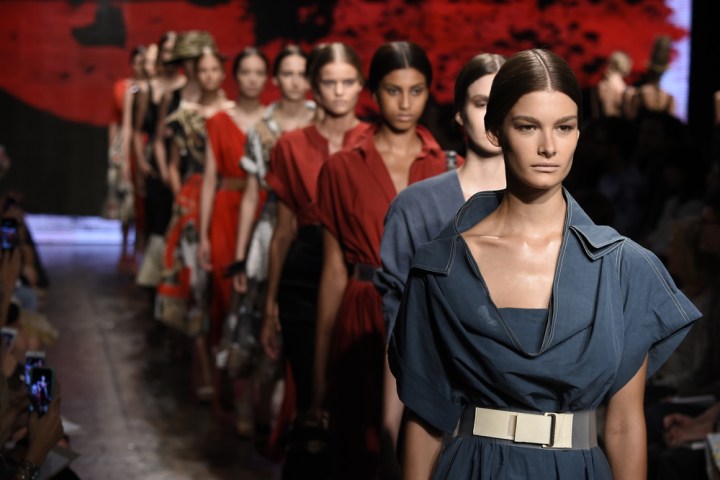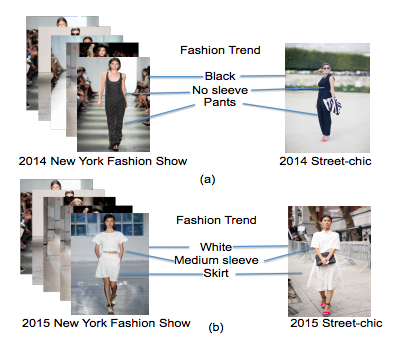
In their paper, “Who Are the Devils Wearing Prada in New York City?” KuanTing Chen and four colleagues describe their approach to designing a way to automatically detect fashion trends in New York City. They began by collecting two buckets of data: 471 “street-chic images” in New York from April 2014 to July 2014, and 575 street-chic images in New York from April to July 2015; and 3,914 images from the 2014 summer/spring New York Fashion Week, and 4,000 images from the 2015 summer/spring New York Fashion Week.
Related: Inside one of the first 3D-printed fashion shows in America
The team trained their machine vision algorithm to recognize a person’s pose and nine regions of their body: upper arms, lower arms, upper legs, lower legs, and torso. “It then analyses the color, texture, skin, and so on for each of these areas to create a list that acts like a visual feature vector for the entire body,” according to MIT Technology Review.
So what did the trained algorithm find in its initial analyses of the data sets? “For example, in upper body color, both 2014 and 2015 fashion images have a large amount of white, gray and black colors,” according to the paper. The team adds that in 2015, blue, cyan, red, and multicolor garments are popular for the upper body, while blue and purple are popular for the lower body.

Another example of the machine vision system’s findings is that this summer, people tended to wear bright clothes on the upper and lower parts of their bodies, which deviates from bright colors worn mostly on the upper body in fashion shows. “A reasonable explanation is that light-colored clothes can absorb less sun light and keep people cooler; therefore, people are tempted to wear light color clothes in order to keep them cooler in the hotter weather in 2015,” according to the paper.
The research team intends to expand the data set for future studies. “Moreover, there is also keen interest in exploring the proper fashion outfits to recommend users by aggregating user preference in clothing style and one future direction would be to incorporate these elements into the existing model and the scope will be extending and applying our system to practical applications, for example clothing style and product recommendation.”
In the introduction of their paper, the researchers note that being able to discover fashion trends in this manner has applications for clothing recommendations and advertising.


